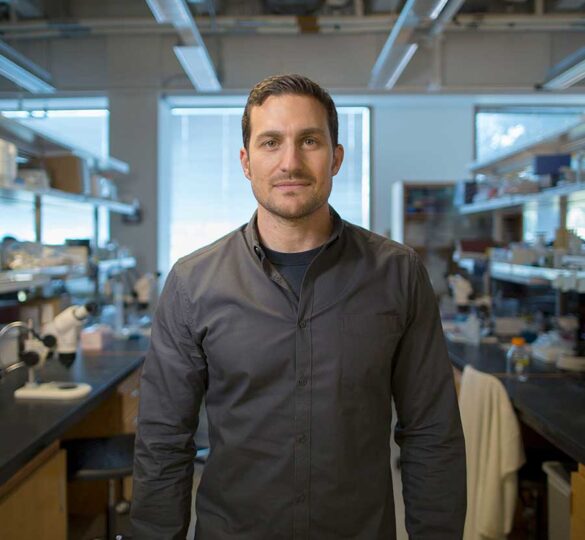New Research Holds Promise For Restoring Lost Vision

Stanford researchers, funded in part by the National Eye Institute and the Glaucoma Research Foundation, make discovery that may help glaucoma patients who have lost vision.
Stanford researchers, funded in part by the National Eye Institute and the Glaucoma Research Foundation, make discovery that may lead to help for glaucoma patients who have lost vision. Study points toward potential regenerative therapies for damaged cells.
New research by Andrew Huberman, PhD, associate professor of neurobiology at Stanford University, has taken a novel approach to the study of nerve regeneration in glaucoma. In a study published in the scientific journal Nature Neuroscience, Dr. Huberman describes conditioning injured optic nerve cells to regenerate. Blind mice treated with this approach regained partial eyesight—a surprising discovery that has significant implications for neurodegenerative diseases like glaucoma.
In glaucoma, the retinal ganglion cells—which collect visual information and send it to the brain—suffer the most damage. Dr. Huberman and his colleagues have been exploring ways to help these cells regrow and reconnect to the brain. The researchers adopted a combined approach that uses both genetic and visual stimulation to enhance neural activity. They activated common growth mechanism in cells, called the mTOR signaling pathway, in the severed retinal ganglions of mice and also repeatedly exposed the damaged eye to high-contrast oscillating black-and-white images. The researchers discovered that this regimen was able to trigger the once-injured retinal cells to regrow optic nerve fibers along damaged pathways to the brain, giving the mice limited eyesight.
Huberman’s research demonstrated for the first time that repaired retinal ganglion cells, when treated with combination therapy, have the capacity to re-establish connections to the brain to restore vision. This is just the beginning: Ocular repair and strategies to correct diseases like glaucoma may well lead to treatments for other causes of blindness and for neurodegenerative diseases that affect other parts of the body and brain, offering hope to millions of afflicted people worldwide.
The study, funded in part by the San Francisco-based Glaucoma Research Foundation, is part of the National Institutes of Health’s “audacious goals” in vision research, which aims to develop new treatments for major eye diseases, including glaucoma, by 2022. “What they have shown in an animal model is that maybe we can restore vision by reconnecting the nerve cells that are damaged,” said Thomas M. Brunner, President and CEO of the Glaucoma Research Foundation. “Their research shows that there may be promise for people, where we think vision is permanently gone, to restore it.”
Andrew Iwach, MD, the executive director of the Glaucoma Center of San Francisco and a professor of ophthalmology at UC San Francisco, said the new research highlighted an opportunity for doctors to take a more active role in treatment, instead of just prevention. “This may help us open another area of exploration for research, not only to play defense and protect what’s left, but also go on the offense to help patients,” Dr. Iwach said.
Sources: San Francisco Business Times, Nature Neuroscience, The Pew Charitable Trusts
First posted August 15, 2016